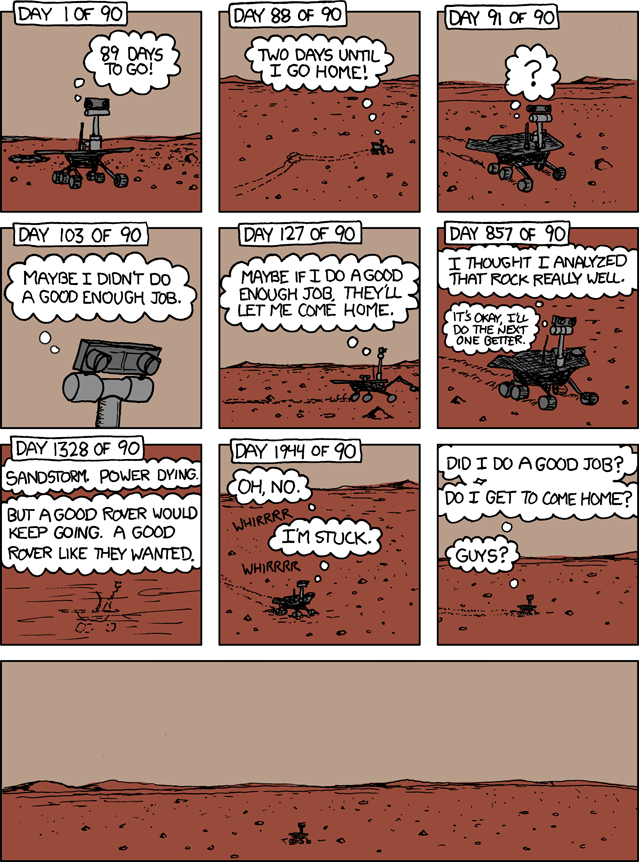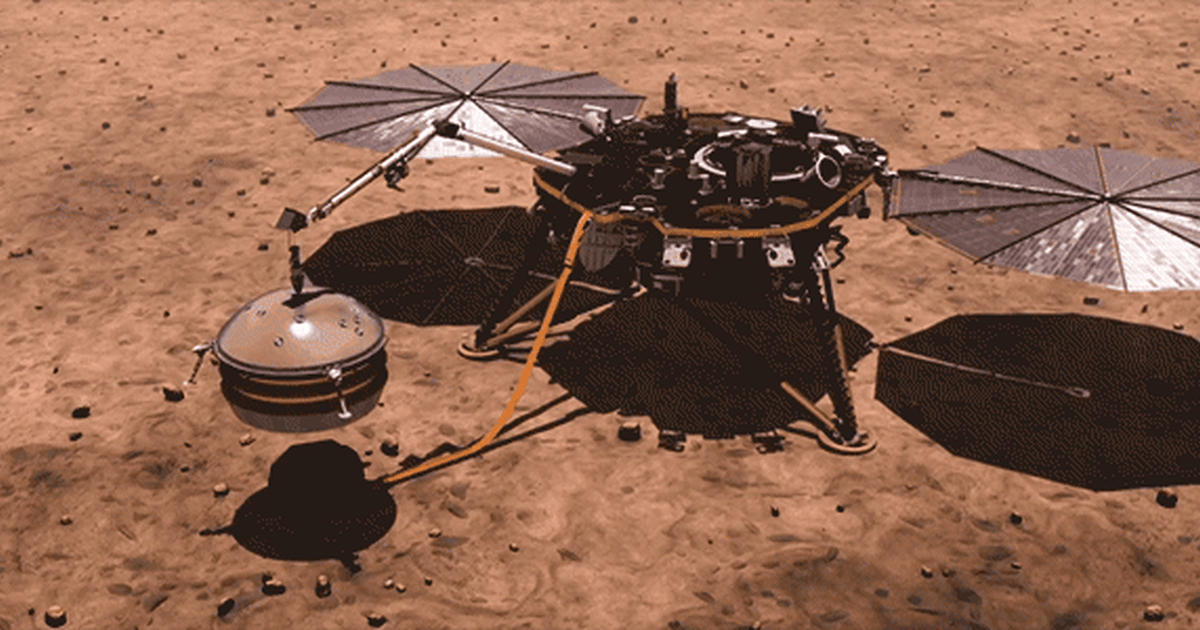https://www.buzzfeednews.com/article/danvergano/mars-rover-opportunity-nasa-1
A Dust Storm Has Killed NASA’s Longest-Lived Mars Rover
The Opportunity rover landed on the red planet with its twin, Spirit, in 2004.
Dan Vergano
Posted on February 13, 2019, at 2:03 p.m. ET
NASA’s Opportunity rover, originally meant to survive for three months, was declared dead by space agency officials on Wednesday, killed by a massive dust storm after 14 years of roaming Mars.
"I declare the Opportunity mission as complete," said NASA's Thomas Zurbuchen at
a briefing on the rover.
Opportunity landed on Mars on Jan. 25, 2004, rolling out of an airbag onto rusty dirt about three weeks after
the arrival of its twin rover, Spirit. Each about the size of a golf cart, and costing a total of $820 million, the twin rovers
jump-started a sagging space agency, triggered tears at mission control and visits to JPL from politicians, and sparked the public’s imagination of exploring the red planet.
Investigating craters and traces of waterborne rock beds, Opportunity lasted
more than 5,000 Mars days, called “sols,” or about 5,200 Earth days, before its mission ended. The rovers roamed slowly — Opportunity had a top speed of 0.1 miles per hour, and covered just 28 miles in its lifetime — and uncovered past signs of watery geology in the walls of craters, pursuing a NASA plan to “follow the water” on the planet.
The rovers were solar-powered, and NASA never expected them to live through a Martian winter. They survived by parking on a tilt during winter months to direct more sunlight onto their solar panels. And surprisingly powerful Martian winds reliably cleared the panels of dust.
Spirit’s last communication with Earth came in 2010, after it became trapped in the
Gusev crater. In June 2018, NASA announced that Opportunity had entered “sleep” mode after a massive dust storm had blotted out its sunlight, draining the rover’s batteries and sending it into a “low-power fault” status that required days to ride out.
Despite initial confidence the rover would ride out the storm, NASA officials reported in October that the
rover had not revived to independently send a signal after the storm ended, initiating a campaign to sent a wake-up call to Opportunity. The last attempt came yesterday, leading to today’s declaration of the end of the mission.
"This is a hard day, and it is a harder day for me because I was there at the beginning," rover project manager John Callas of NASA's JPL, said at the briefing. He speculated that a heater had continued to run during the dust storm, wearing out the rover's battery power. "The time has come to say goodbye," said Callas. "We've done phenomenal things."
Cont'd ...










